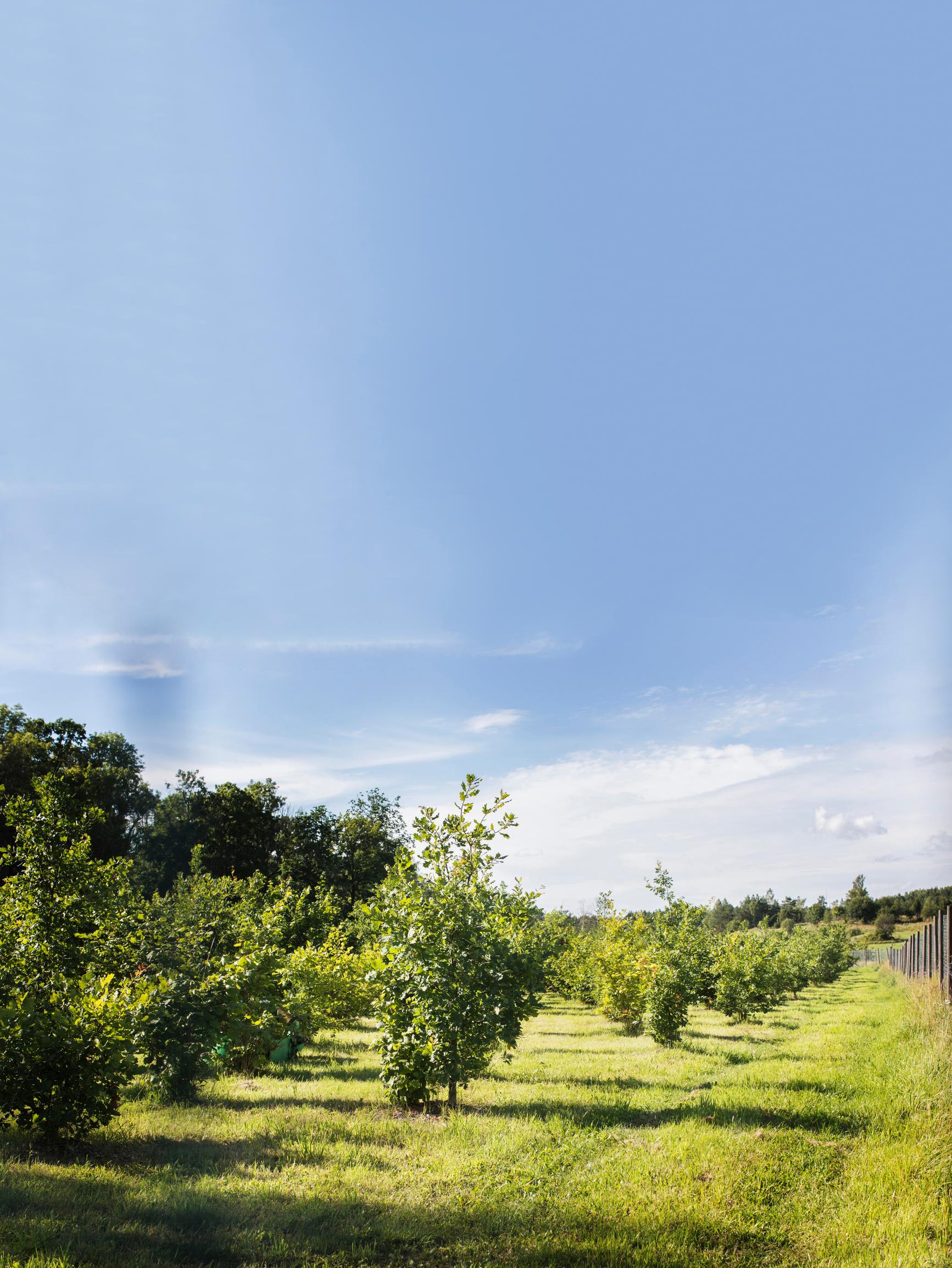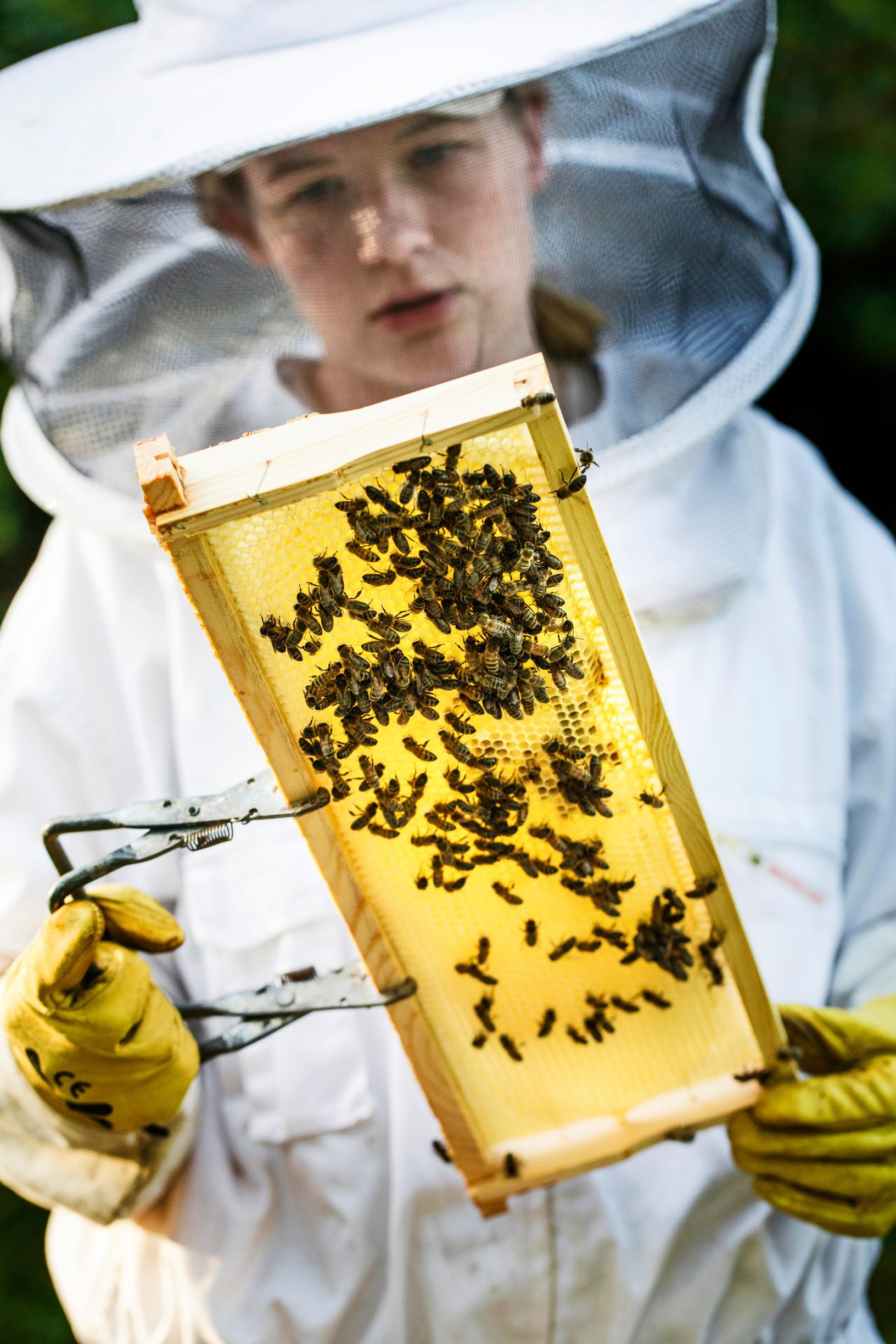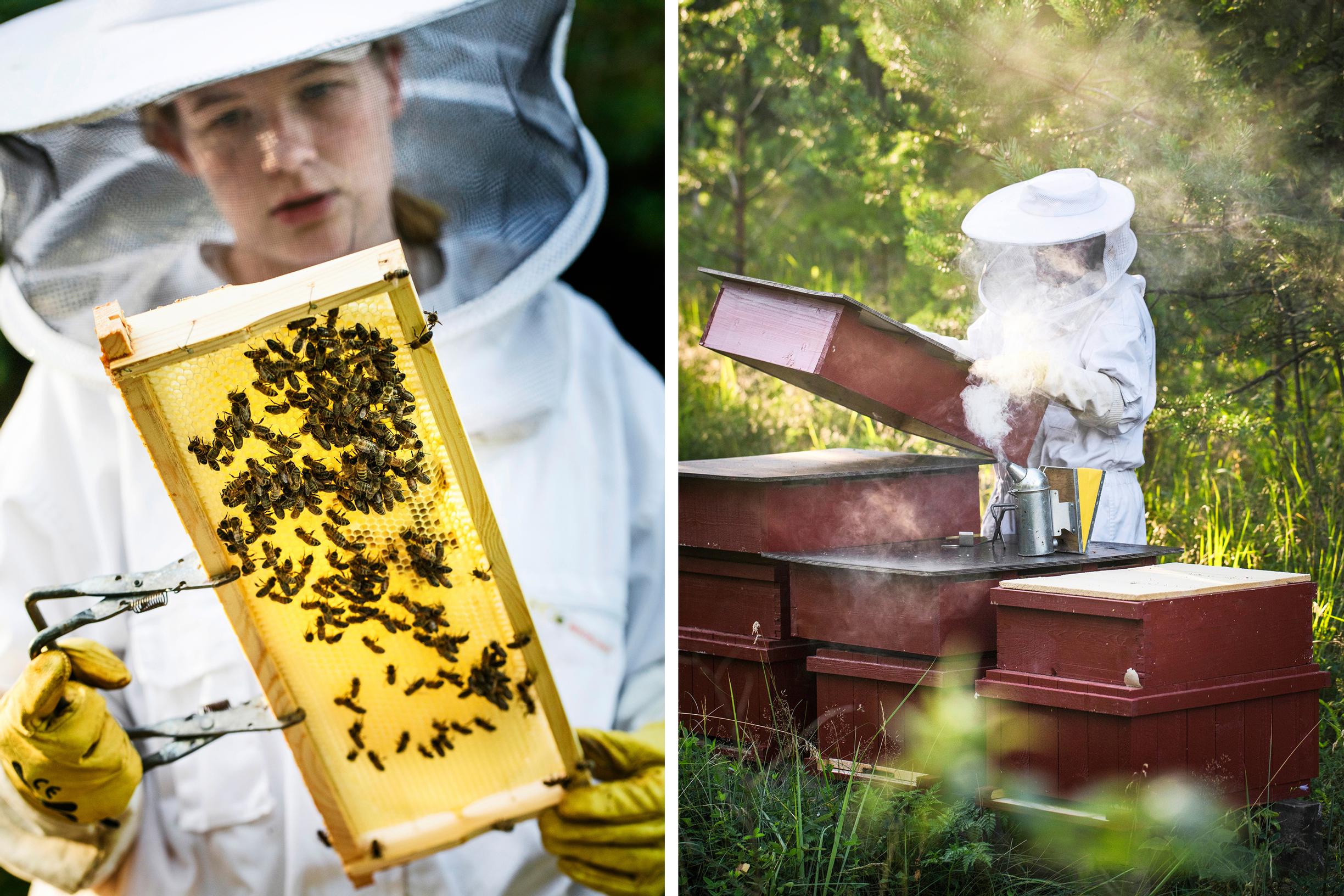
Nora’s fairytale apiary: Nurturing endangered dark bees at the Qvidja Manor Castle
Nora Mäntysaari keeps endangered Nordic dark bees at the Qvidja estate in southwestern Finland. She knows which nectar-rich flowers spark their interest.
Getting into the protective gear goes smoothly and confidently. First, beekeeper Nora Mäntysaari slips out of her Minna Parikka honeycomb-patterned designer sneakers and into pale yellow rubber boots, then steps into a head-to-toe white protective suit. She puts on a wide-brimmed protective hat, pulls on thick leather gloves, and lifts a steel smoker from the trunk of her station wagon parked at the forest’s edge.
“We’re getting close to the moment when my friendship with the bees ends,” Nora says with a mischievous twinkle in her eye.
“Soon I’ll collect the harvest.”
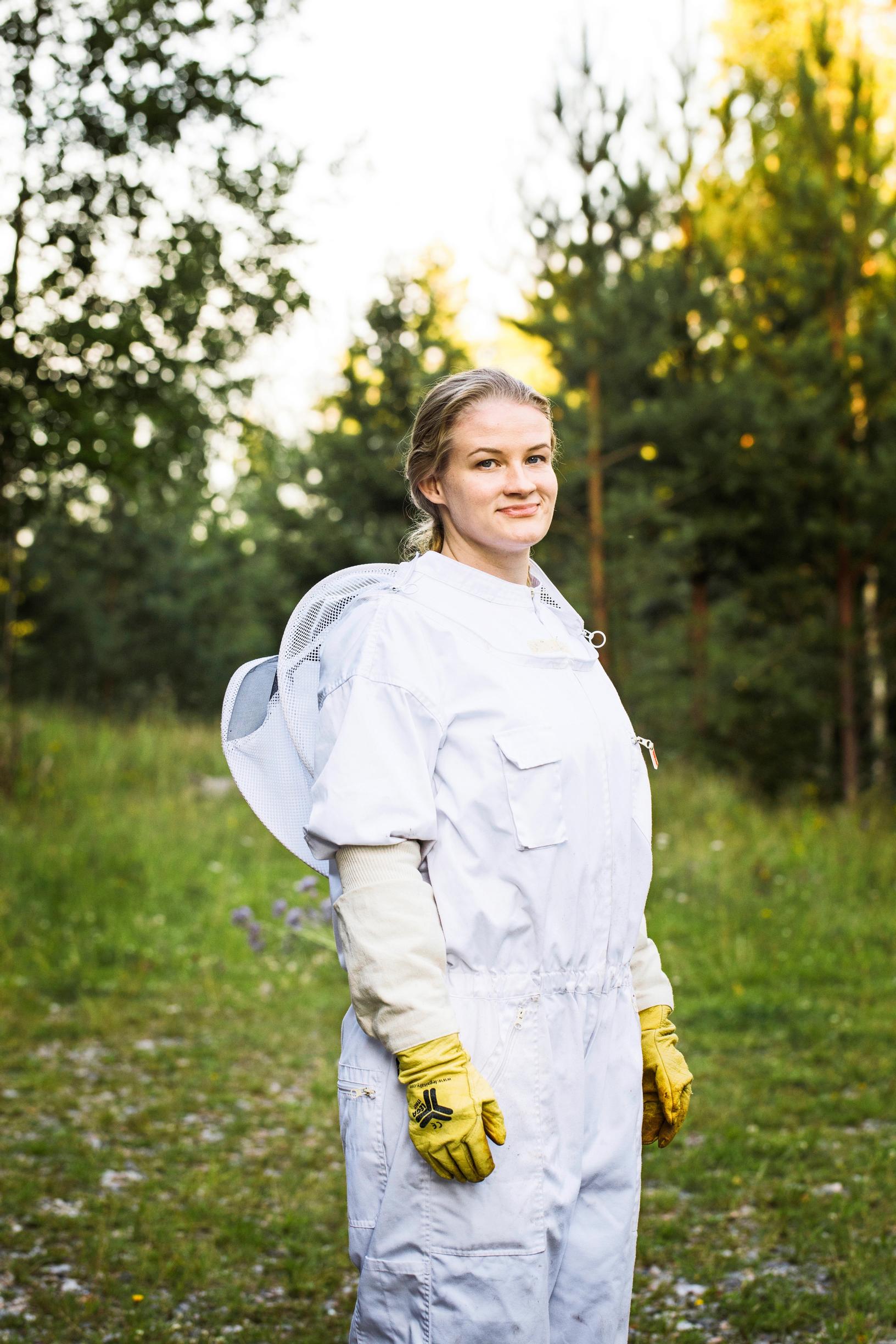
Nora heads toward the small cottages painted with traditional red-ochre paint. They're nestled among wild raspberry bushes, clover, willow scrub, and overgrown grass. She puffs smoke from the smoker into the hive entrance and explains that the bees inside are getting ready to leave. However, instead of taking off right away, they retreat deeper inside and fill up on honey. That allows Nora to take her time removing the hive’s roof and lifting the frame out with her tongs.
Nora studies the comb dotted with dark bees:
“There’s honey on the way. The pollen suggests the bees have been visiting clovers, and the nectar has that same quality. It’s quite light in color.”
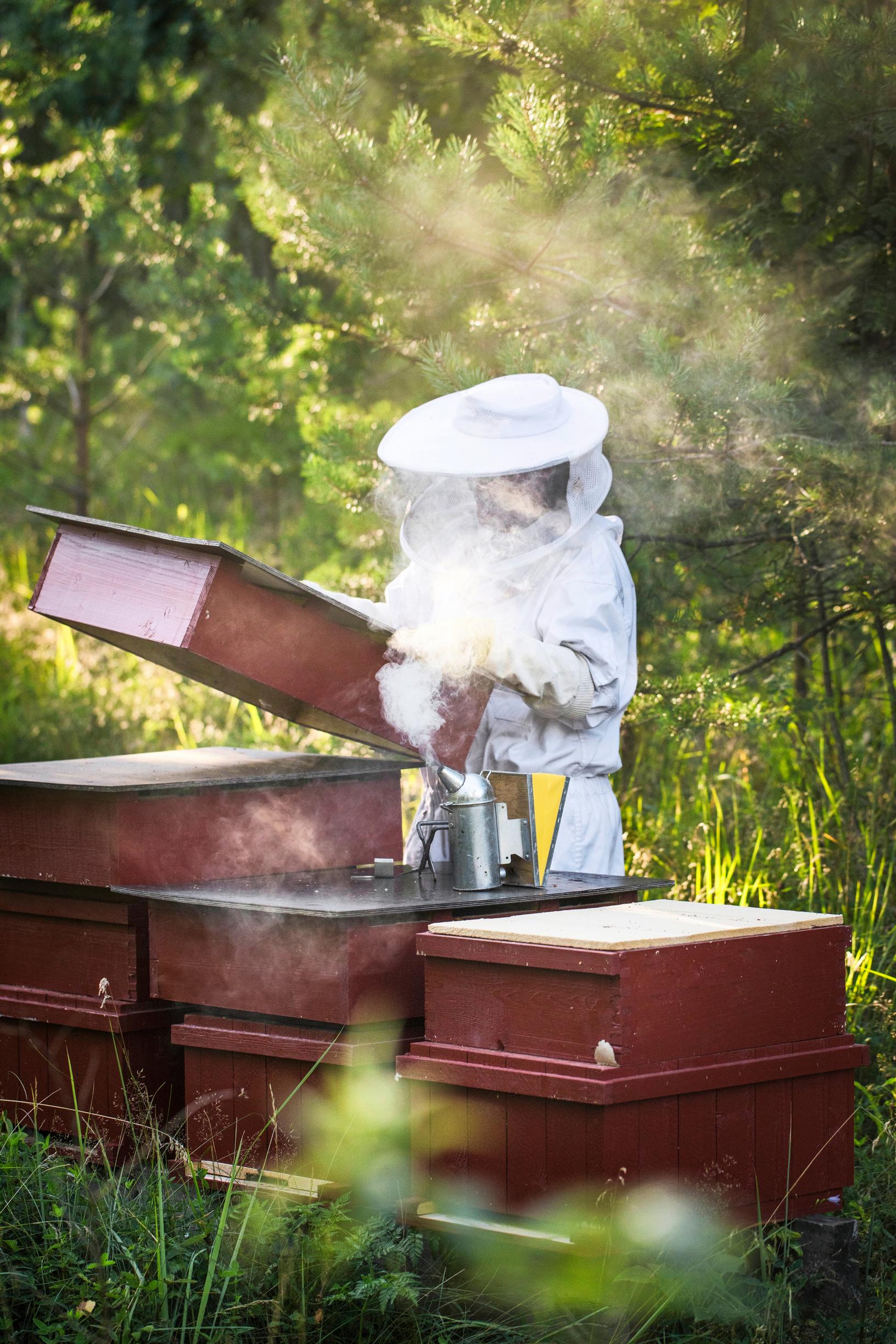
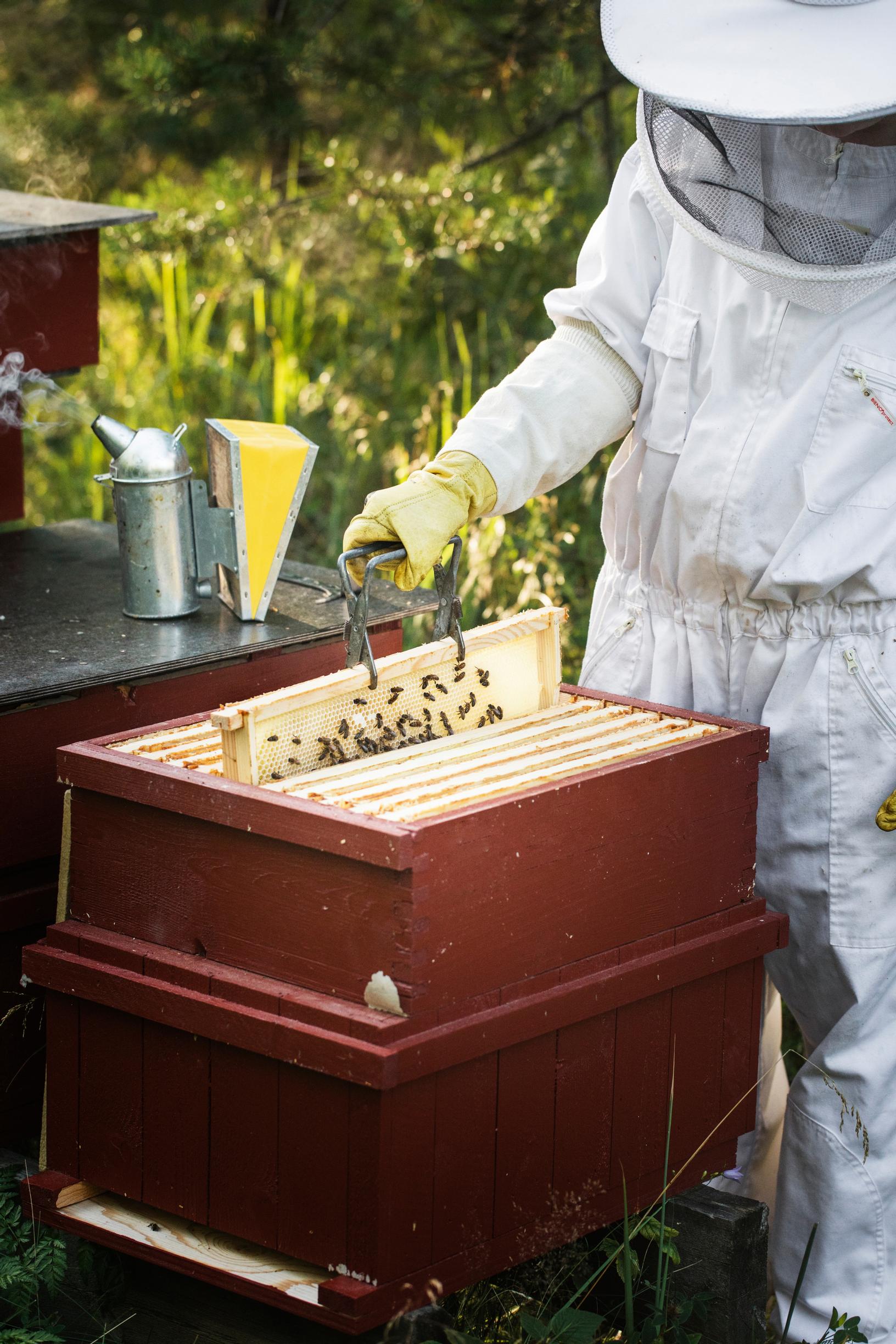
Nora is a dedicated bee lover. She often goes on tours to speak on their behalf and runs insect hotel workshops. Her own honey brand, Hello honey, has won over fans of varietal honey in both Finland and abroad. Nora is also one of the few Finnish beekeepers specialized in dark bees.
She has been keeping bees for around four years and now manages ninety hives across southern Finland. Last year, her long-held dream came true when she started working with Nordic dark bees.
Nora is one of the few beekeepers in Finland who specialize in dark bees.
Dark bees are an indigenous honeybee breed from Finland. They are typically darker than other hive bees and about one and a half centimeters long. They originate from Sweden, and the first dark bees arrived in southwestern Finland in the late 1700s, Nora says.
Dark bees have adapted well to northern conditions, evident in the way that they can limit brood production if there isn’t enough food. They also consume less feed in winter than other imported breeds. In summer, they produce less honey than typical hive bees, but they excel at using patchy nectar sources in nature. They’re especially good at gathering nectar from heather flowers.
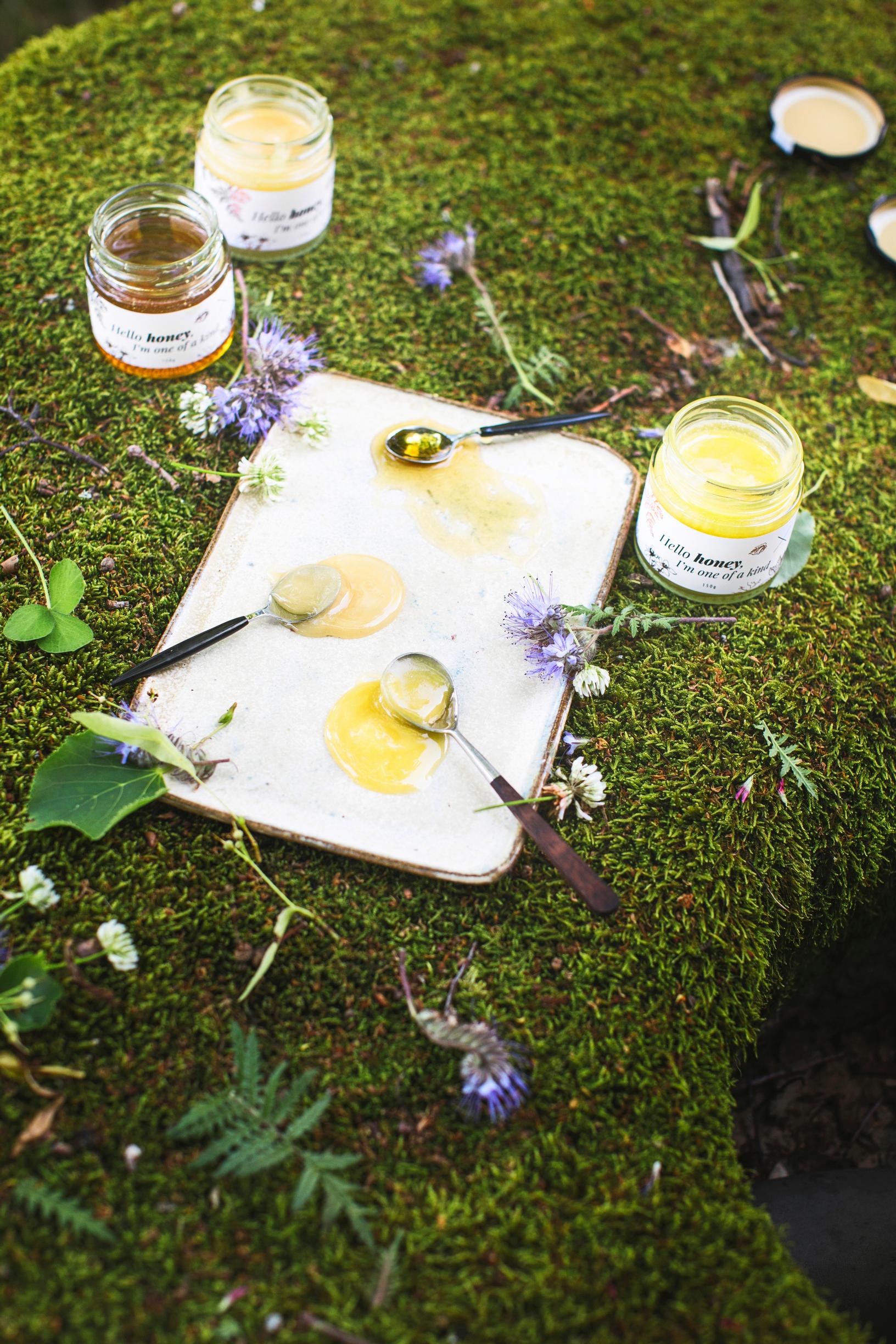
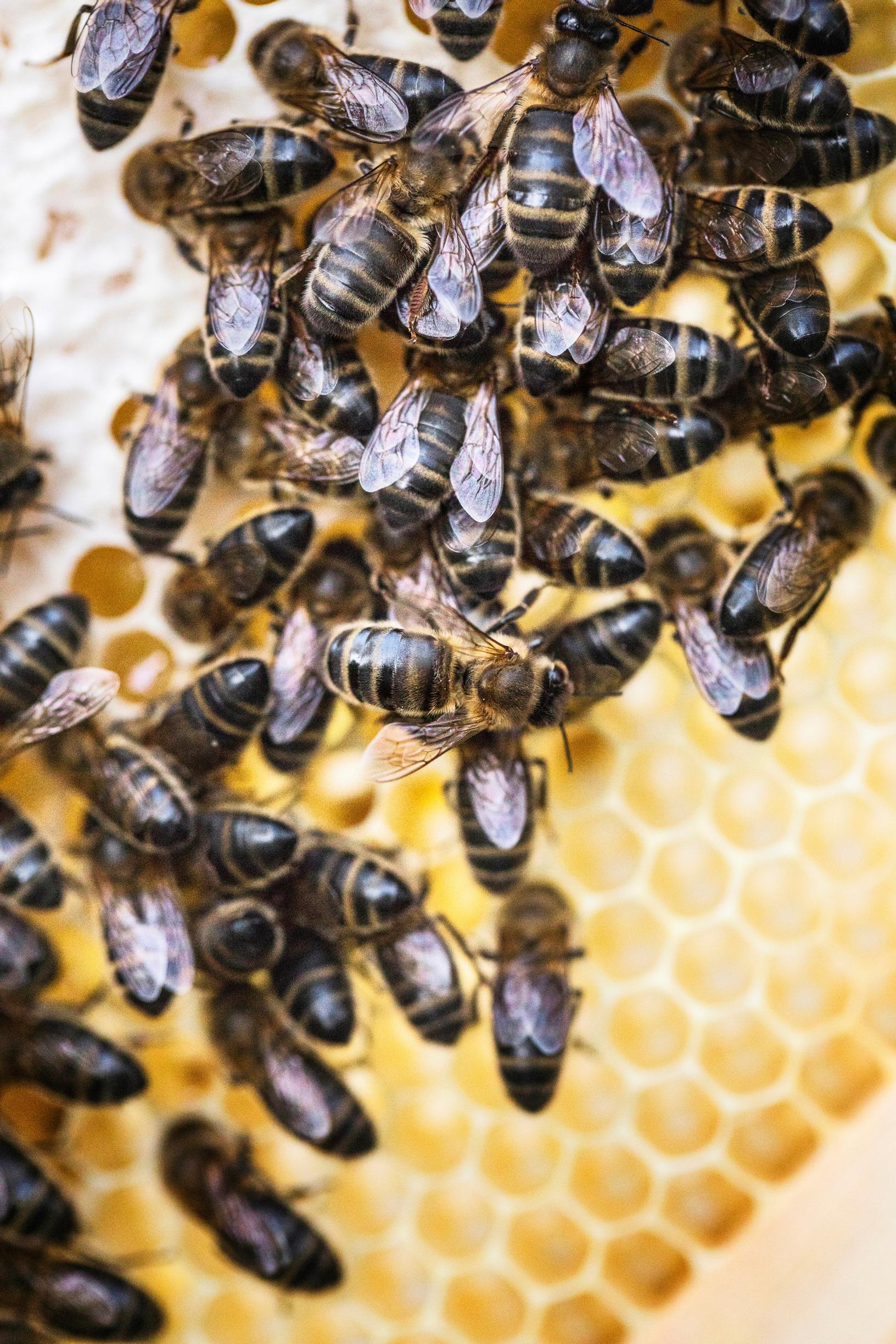
Nora’s dark bee hives are located in Parainen, southwestern Finland, on the Qvidja estate.
Qvidja feels so magical to Nora that it reminds her of the Alice in Wonderland book. Indeed, Finland’s oldest manor castle perches on a hillside, exuding fairytale ambiance, making visitors wonder if this place can really be in Finland. The estate belongs to Ilkka Herlin and Saara Kankaanrinta.
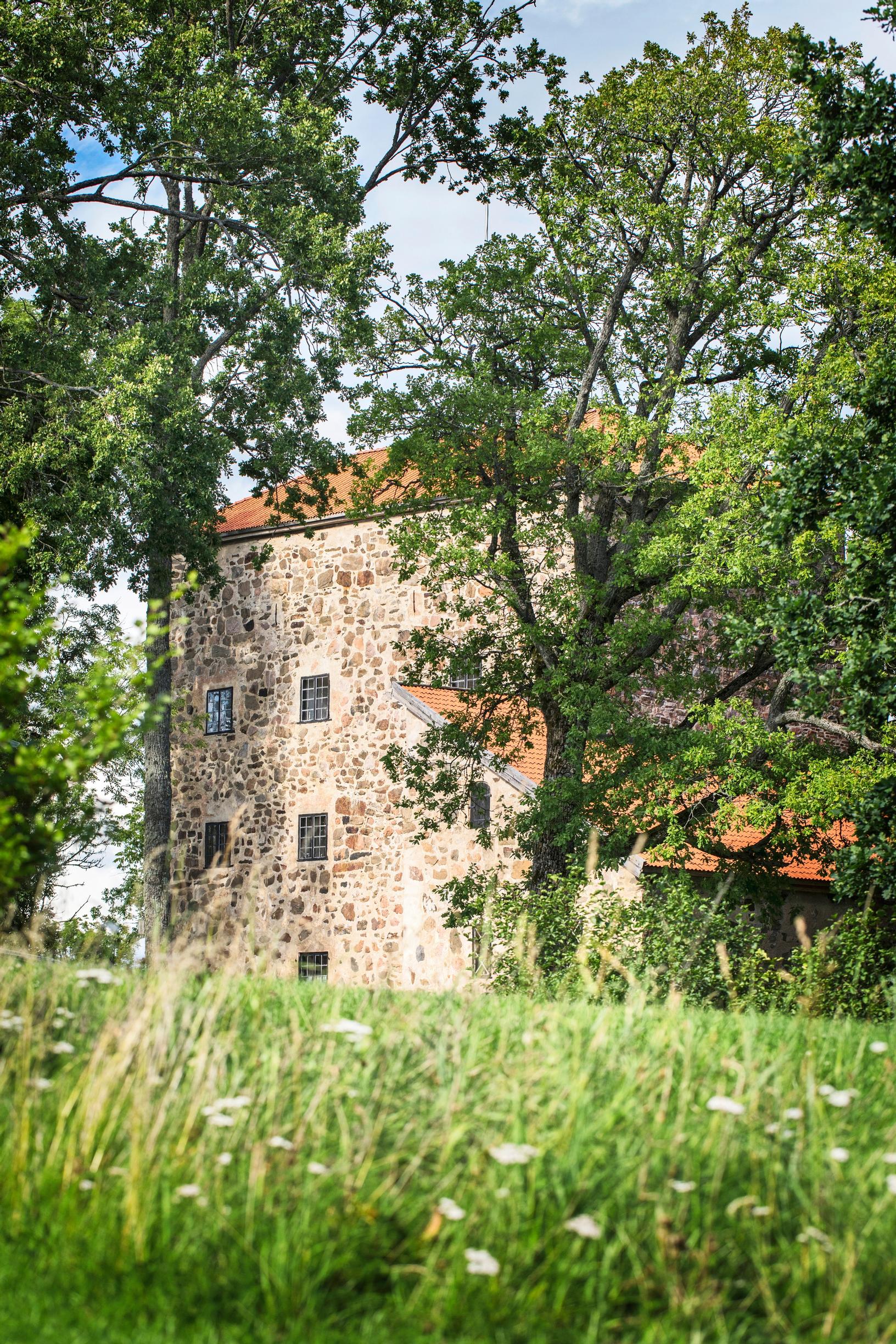
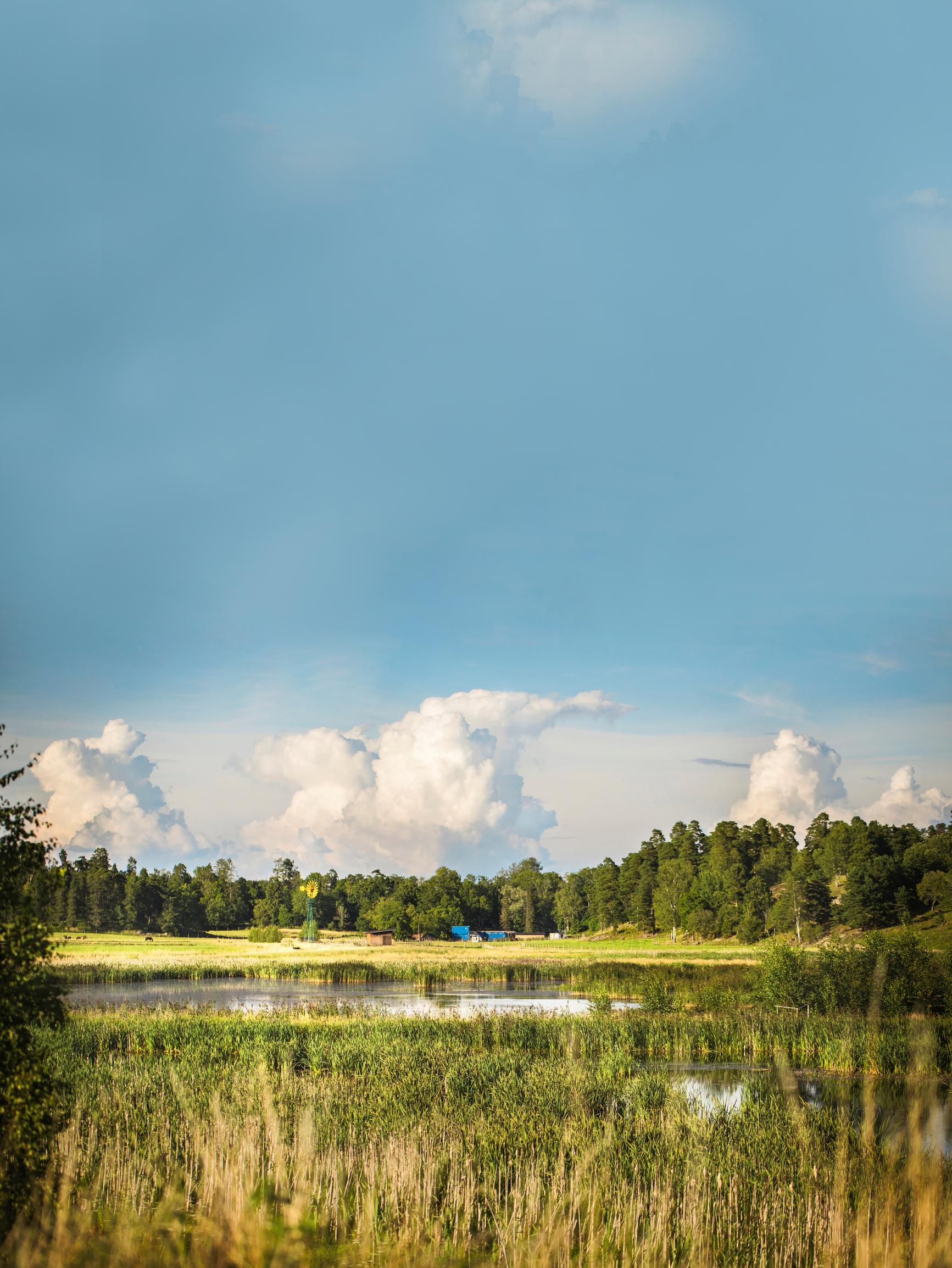
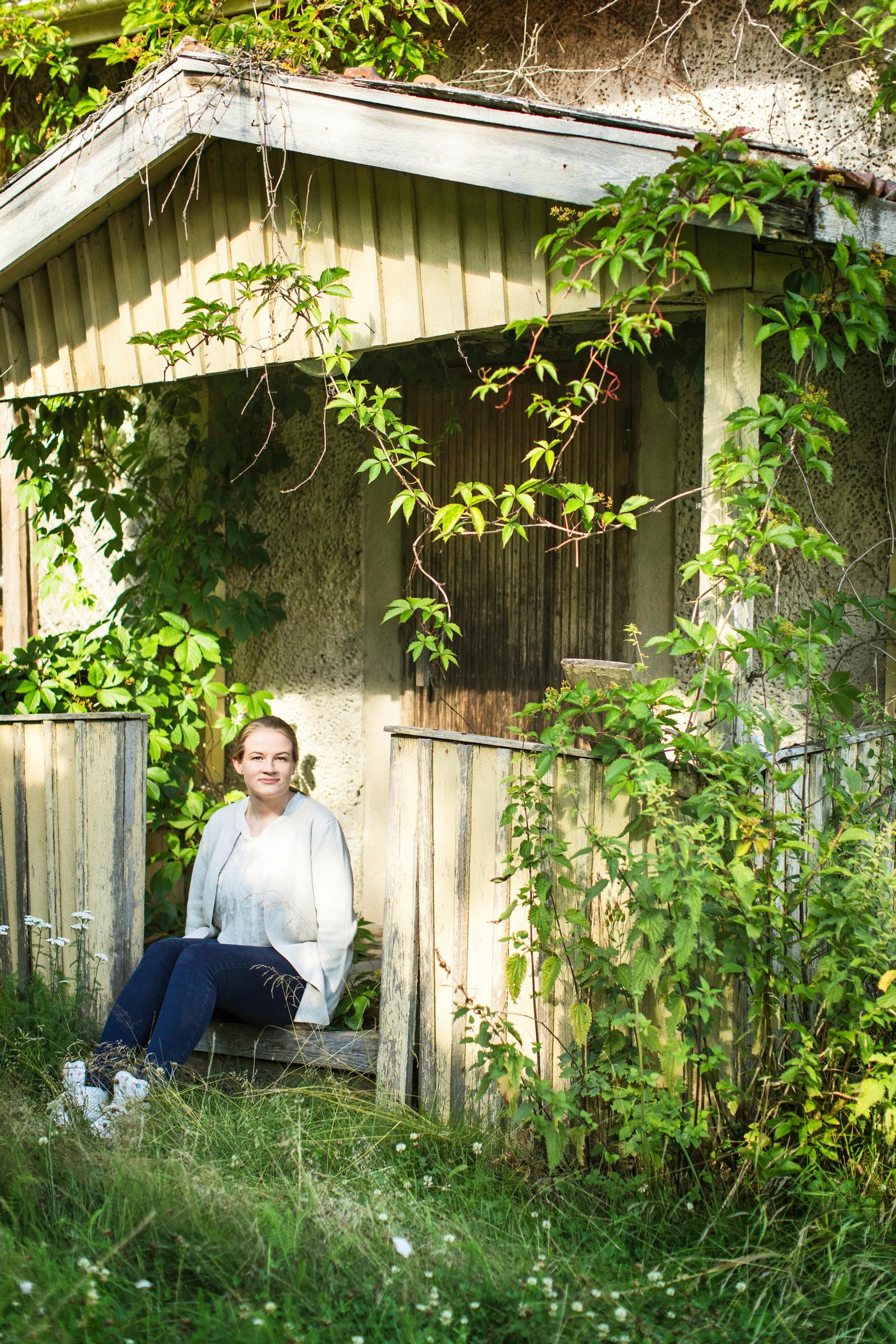
It’s only half a kilometer as the crow flies from the stone castle to Nora’s apiary. From there, the dark bees fly out to collect nectar in the castle gardens, fields, meadows, and roadsides. Nora has spotted her bees buzzing in lacy phacelias, white and alsike clovers, and occasionally red clovers—although they don’t like red clover as much because its flowers have a deeper corolla, and the bees have short tongues, she says.
Bees are drawn to different plants for different reasons. According to Nora, the lacy phacelia’s long blooming period makes it an excellent nectar source, and its pollen is also high quality. The white sweet clover, related to the clover, produces nectar with a higher sugar content than many other plants. It also contains less water, so it requires less effort from the bees to dry in the hive. Another lesser-known nectar source is the sweet honeydew produced by aphids on hardwood trees like linden.
Wild raspberry is the most important forage plant for bees in Finland.
Still, the chief forage plant for Finnish bees is wild raspberry. It can yield nectar in various growing conditions, and if the weather favors flying, the weight of bee hives will increase significantly. The secret of the raspberry lies in its flowers.
“Its blossoms point downward, so they’re less sensitive to things like rain that might rinse away the nectar. Even if the weather isn’t perfect, bees and other pollinators can still easily access its nectar.”
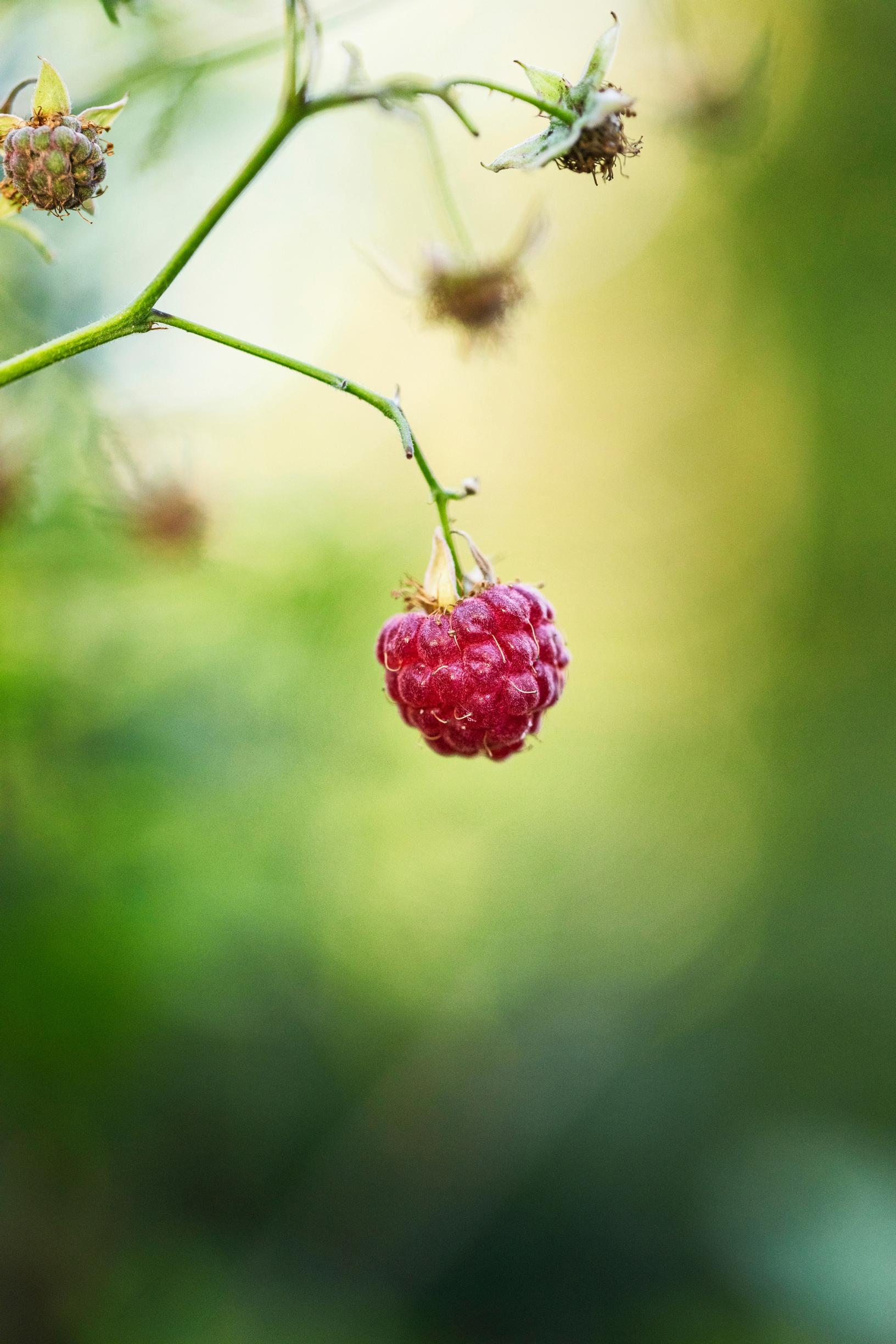
At Qvidja, everything is geared toward maximizing biodiversity. Nora says that even forestry is planned according to the flight paths of the rare Apollo butterfly. Wildflowers are allowed to bloom freely, and clovers are seeded into pastures for horses and cattle. Meanwhile, a variety of plants—such as white mustard, linseed, crown daisy, malope, and spring rapeseed—are sown near Nora’s apiary for the benefit of pollinators.
“What’s a weed to some is a treasure to others.”
She encourages home gardeners to add more nectar-friendly plants to their gardens. The easiest way to do so is to mow less often and to plan a garden that has continuous blooms throughout the growing season. Early spring bulbs, herbs, berry bushes, and fruit trees are essential for bees, as are late-summer blossoms like clover and sunflowers.
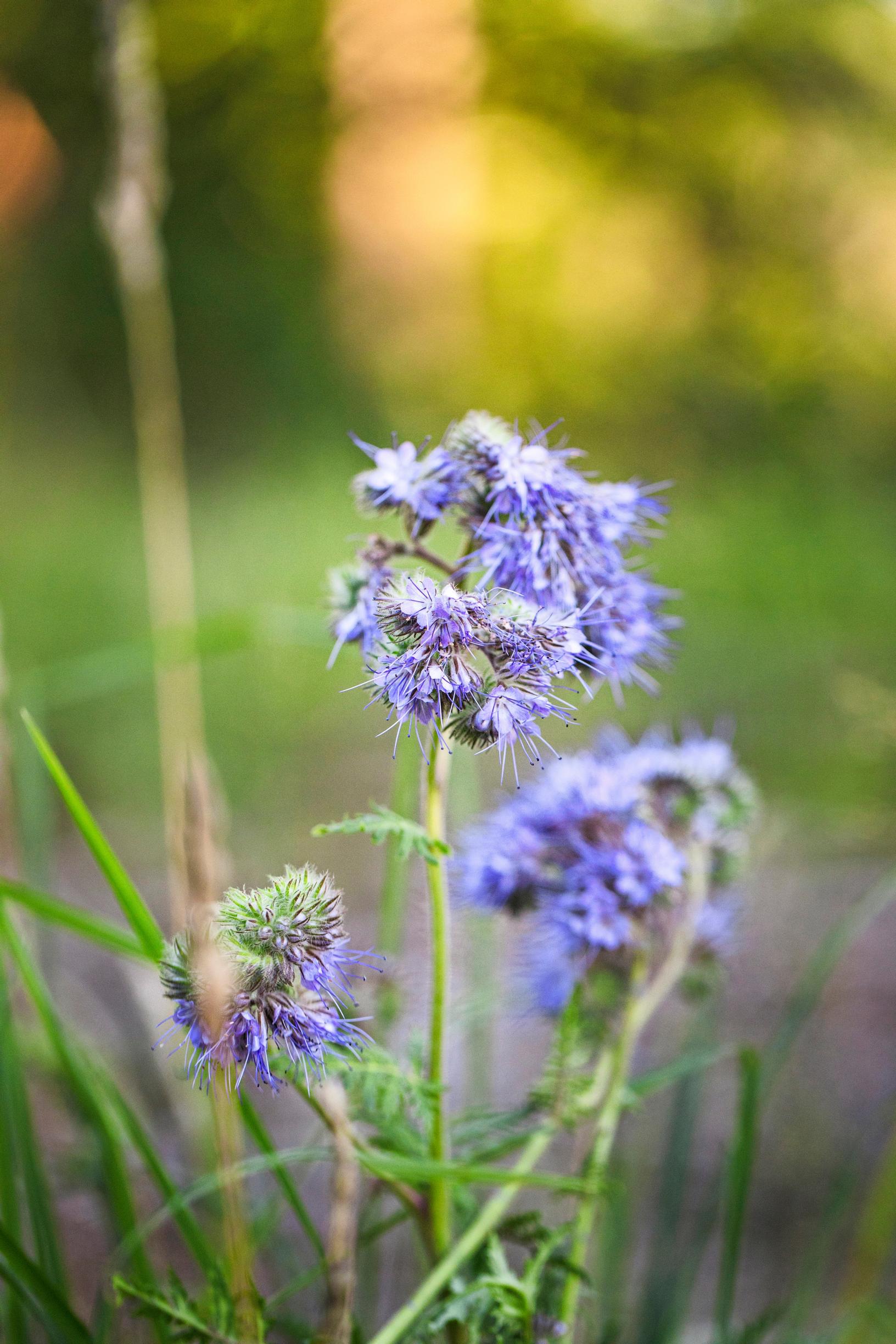
Nora has also planted her own nectar-rich fields, with successive flowering schedules. In the first summer, the main flower was the lacy phacelia, followed by the white sweet clover in the second. In the third and fourth summers, clovers will take over.
"We’re now in the second year, the sweet clover phase, and it’s going pretty much as planned," Nora chuckles, admitting she’s surprised how easy it is to cultivate a nectar-rich field.
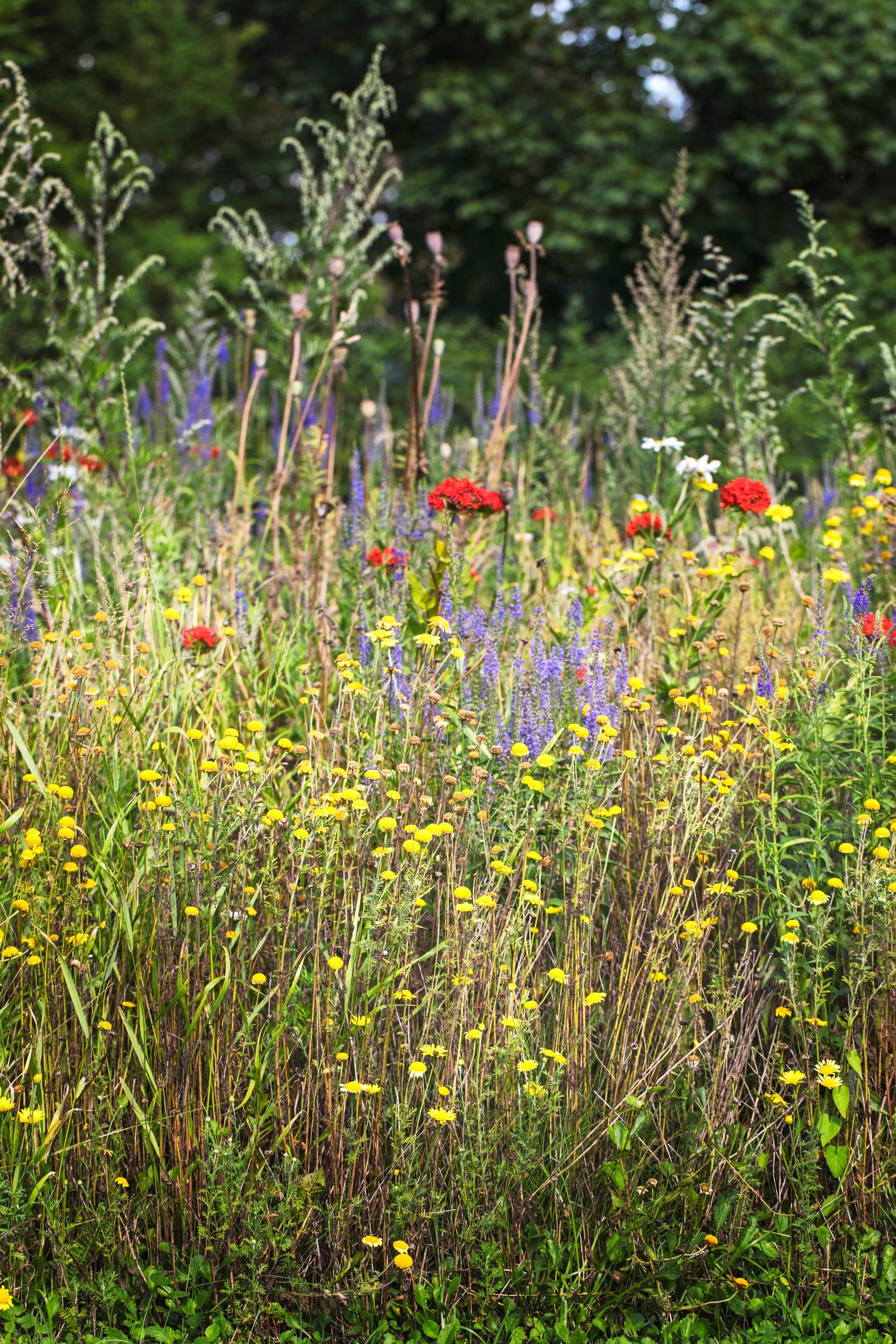
Nora carefully observes nature’s changes even in her spare time, tracking flowering times because they directly affect hive productivity. The blooming of willows and dandelions in spring is especially crucial for the entire season’s success. But which nectar plant intrigues her the most?
“I’m quite fond of the white sweet clover. Almost nobody recognizes it, yet it makes a fascinating honey. It also fixes nitrogen in the soil and is great for improving soil thanks to its large root system. Though its white blooms look modest, they smell wonderful. It’s a bit odd but so beneficial!”
Nora thinks Qvidja could be from the Alice in Wonderland book.
By late afternoon, the sun has dipped behind the forest canopy near Nora’s hives. The buzzing of the bees merges with chirping insects in the grass and the neighs of horses on Qvidja’s pastures. Nora thinks the best thing about beekeeping is that she can tend to the hives alone. With the bees humming and the scent of honey and beeswax in the air, the atmosphere is almost meditative. She also enjoys savoring the distinct nuances of each honey.
“It’s amazing how much the origin of a plant can change the flavor of honey. Consider dandelions: what’s a weed to some is a treasure to others. Dandelion honey can be exquisite, and pollinators love it.”
